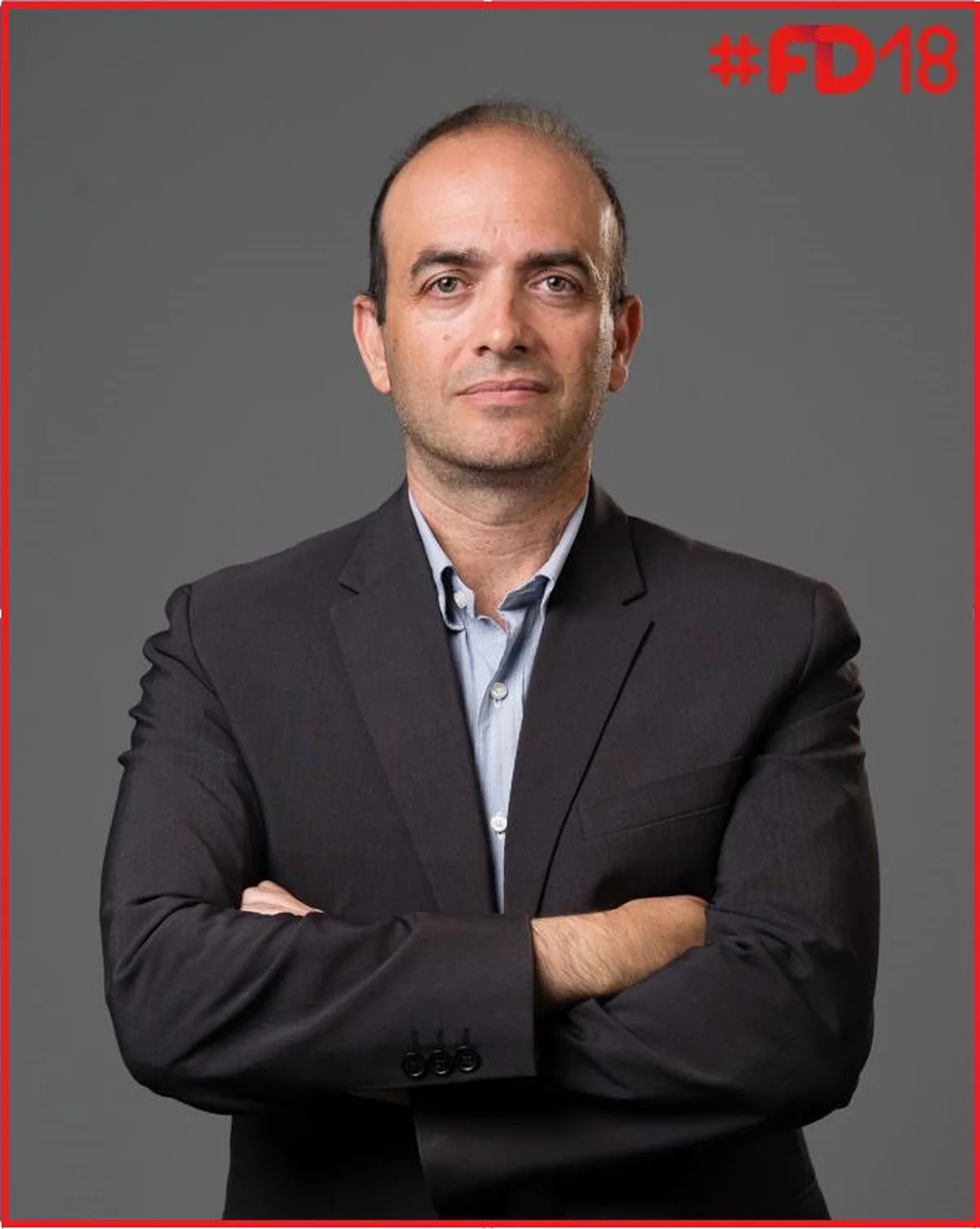
Llewellyn King: Will AI be mankind’s greatest adventure so far? There’s hope and fear
MIT Computer Science and Artificial Intelligence Laboratory, in Cambridge, Mass. Its architecture can produce some of the anxiety that goes with the AI revolution. We’re in an increasingly strange world.
Some ways in which an advanced misaligned AI could try to gain more power.
Hit this link for video on the birth of artificial intelligence, whose founding as a discipline happened at Dartmouth College back in the summer of 1956.
WEST WARWICK, R.I.
A new age in the human experience on Earth is underway. It is an age of change as profound — and possibly more so — than the Industrial Revolution with the steam engine introducing the concept of post-animal labor, known as shaft horsepower.
Artificial intelligence in this new age is infiltrating in all areas of human endeavor.
Some things, it will change totally, like work: It will end much menial work and a whole tranche of white-collar jobs. Some it will enhance our lives beyond imagination, such as in medicine and associated longevity.
Some AI will threaten, some it will annihilate.
It will test our understanding of the truth in what has become a post-fact world. The veracity of every assertion will be subject to investigation, from what happened in history to current election results. It will end much menial work and a whole tranche of white-collar jobs.
At the center of the upheaval in AI is electricity. It is the one essential element — the obedient ingredient — for AI.
Electricity is essential for the computers that support AI. But AI is putting an incalculable strain on electric supply.
The United States Energy Association, at its annual meeting, learned that a search on Google today uses a tenth of the electricity as the same search on ChatGPT.
Across the world, data centers are demanding an increasing supply of uninterruptible electricity 24/7. Utilities love this new business, but they fear that they won’t be able to service it going forward.
Fortunately AI is a valuable tool for utilities, and they are beginning to employ it increasingly in their operations, from customer services to harnessing distributed resources in what are called virtual power plants, to such things as weather prediction, counting dead trees for fire suppression, and mapping future demand.
Electricity is on the verge of a new age. And new technologies, in tandem with the relentless growth in AI use, are set to overhaul our expectations for electricity generation and increase demand for it.
Fusion power, small modular reactors, viable flexible storage in the form of new battery technology and upgraded old battery technology, better transmission lines, doubling the amount of power that can be moved from where it is made to where it is desperately needed are all on the horizon, and will penetrate the market in the next 10 years.
Synchronizing new demand with new supply is yet to happen, but electricity provision is on the march as inexorably as is AI. Together they hold the keys to a new human future.
A new book by Omar Hatamleh, a gifted visionary, titled This Time It’s Different, lifts the curtain on AI. Hatamleh, who is chief AI officer for NASA’s Goddard Space Flight Center, in Greenbelt, Md., says, “This time, it truly is different … Witness AI’s awakening, revealing its potential for both awe-inspiring transformation and trepidation.”
Hatamleh organized NASA’s first symposium on AI on June 11 at Goddard. Crème de la crème in AI participants came from OpenAI, Google, Microsoft, Nvidia, Qantm AI, Boeing and JP Morgan.
The consensus view was, to my mind, optimistically expressed by Pilar Manchon, Google’s senior director of AI, who said she thought that this was the beginning of humankind’s greatest adventure. The very beginning of a new age.
A bit of backstage criticism was that the commercial pressure for the tech giants to get to market with their generative AI products has been so great that they have been releasing them before all the bugs have been ironed out — hence some of the recent ludicrous search results, like the one from this question, “How do you keep the cheese on pizza?" The answer, apparently, was with “glue.”
However, these and other hallucinations won’t affect the conquering march of AI, everyone agreed.
Government regulation? How do you regulate something that is metamorphosing second by second?
A word about Hatamleh: I first met him when he was chief engineering innovation officer at NASA in Houston. He was already thinking about AI in his pursuit of off-label drugs to treat disease, and his desire to cross-reference data to find drugs and therapies that worked in one situation, but hadn’t been tried in another, especially cancer. This is now job No. 1 for AI.
During Covid, he wrangled 73 global scientists to produce a seminal report in May 2020, “Never Normal,’' which predicted with eerie accuracy how Covid would affect how we work, play, socialize and how life would change. And it has. A mere foretaste of AI?
Llewellyn King is executive producer and host of White House Chronicle, on PBS. His email is llewellynking1@gmail.com, and he’s based in Rhode Island.
Llewellyn King: How to attack cancer with data mining
NASA’s Omar Hatamleh
The word is exaptation. It will change the future, and it may save your life
It is a word traditionally used in evolutionary biology. But now in scientific and high-tech circles, it is used to describe finding and adapting processes and compounds to uses for which they were not originally intended.
In biology, exaptation is used to describe how an evolving species uses a trait in a new way.
The classic cited example of exaptation is prehistoric creatures that developed wings to keep warm. A later iteration in the same species finds wings can also be used to fly.
In today’s use of the word, it means cross-fertilization of old discoveries with new technologies; extant remedies applied in new ways.
For example, a medicine that was created to treat one disease may be used effectively for another. A drug destined for a specific cancer may be used to treat an immune disorder such as Myalgic Encephalomyelitis, also known as Chronic Fatigue Syndrome. A material developed for space travel may be ideal for strength and lightness in an automobile.
All this takes on much greater importance in the age of mega data and computer capacity to delve into it and find treasuries of new uses.
Today’s machine learning enables the data to be squeezed and pummeled into yielding extraordinary applications and solutions.
“The challenge is to break down silos and to get companies to democratize their data internally and externally,” says Ryan Caldwell, CEO of MX, a financial technology company.
Now a forward-thinking NASA engineer wants to put this approach -- this multidisciplinary, multi-material, multi-compound, multi-procedural, multi-operational data approach -- on a fast track, accelerating cures and solutions.
He is Omar Hatamleh, chief innovation officer, engineering, at the Johnson Space Center (in Houston) of the National Aeronautics and Space Administration and executive director of the Space Studies Program at the International Space University. Hatamleh, a polymath with a fistful of degrees, is establishing Infinity Institute, a new kind of think tank that will accelerate cross-industry innovation over the whole spectrum of discovery and application.
Think discovery and rediscovery as the findings of the past are linked to the needs of today, and as findings in one technology can pollinate unrelated technologies. Essentially, it is the story of NASA and the collateral developments from the space program. Exaptation at work.
The genesis of the Infinity Institute is to be found in a series of four annual NASA cross-industry innovation conferences -- the last just concluded.
They were notable for what was not on the agenda: no large discussions of money or the lack of it; no whining about government or regulations, or court decisions. Just a world of science, ideas and the bond between the seemingly incompatible, which when brought together inform each other. A cellist, Jennifer Stumm, described the math in Bach and what that means for science. A NASA scientist, Steve Rader, described how to find affinity ideas through the Internet of Things. An animated filmmaker, Charlie Wen of Marvel Studios, revealed synergies with industrial design.
In the last of these conferences, data expert Caldwell described how he used the very kind of data management and interrogation Infinity Institute has in mind to save the life of a colleague at MX.
When Brandon Dewitt was diagnosed with terminal cancer in his lungs and face at age 33, and given six months to live, Caldwell went to work to break down the medical silos, which enclose so much medicine and hide so many research results. A new treatment being tested in Oregon, which he found, shrunk multiple tumors in Dewitt’s lungs and cheek and saved his life.
When Caldwell’s 2 ½-year-old daughter Chloe was given the wrong medicine in an emergency room, her heart stopped cold. Doctors said would live only a short time without a heart transplant. Caldwell and his wife went to work: They established a war room with computers and whiteboards and bored into the research. A therapy was found and Chloe, now nearly four, is doing well.
Hatamleh’s first target for the new, sweeping concept of exaptation is cancer.
You would think that cancer is well-researched, but Hatamleh believes the exaptation route is the way to go: “We want to break down barriers, go across industries and identify emerging technologies from various industries and explore their application in other fields.”
He believes he can half the death rate from cancer in 10 years by cross-pollinating technologies and therapies and using the kinds of techniques and ideas on display at his unique innovation conferences.
Llewellyn King is executive producer and host of White House Chronicle, on PBS. His email is llewellynking1@gmail.com and he’s based in Rhode Island and Washington, D.C.





